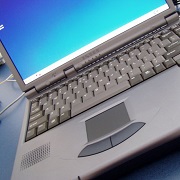Could Electronic Processing Reduce Medical Spending Rates?
The CAQH Index verifies the rates of implementation and decreases in medical spending associated with HIPAA business transactions.

- The US healthcare system is one of the most expensive around the world and the rising costs haven't diminished significantly in recent years. Today, health payers and providers have been working together to reduce medical spending around the country. Using bundled payment models, accountable care organizations, and pay-for-performance initiatives has shown some cost savings for both the insurance industry and medical care providers.

In addition to these healthcare reforms, the 2015 CAQH Index found that the healthcare industry is needlessly spending billions of dollars due to manual administrative processes such as lacking electronic processing for claim status along with benefit and eligibility verification, according to a press release from CAQH.
The CAQH Index verifies the rates of implementation and decreases in medical spending associated with HIPAA business transactions. In particular, the report found that the healthcare industry is spending $8 billion every year due to manual processing of actions that could be completed through automation technology.
Providers and payers are still mailing checks and claims as well as making phone calls to verify patients’ health coverage eligibility. During a webinar, Gwendolyn Lohse, Deputy director at CAQH, provided more detail on the 2015 CAQH Index and its analysis of medical spending.
“The Index is the only industry source that’s tracking on an aggregate level full adoption of electronic transaction and establishing benchmarks for both the volume and the cost,” Lohse stated. “Without that type of tracking at an aggregate level, we really can’t as an industry identify specific opportunities for further improvement. The Index has been really working across both health plans and providers and the vendors who support them to find out how to track adoption and whether systems are in place to do that tracking and record it publically.”
“There’s a wide variety of experts to help us during the process from data analytics, data collection and also analysis and the action to make sure they fit into the product context of the industry,” Lohse mentioned.
To learn more about automation technology, medical spending, and the transition to electronic transactions, HealthPayerIntelligence.com spoke with Raynard Washington, Senior Research Manager at CAQH.

“There’s the actual transaction itself and then there’s the standard. The standards were all adopted by HHS through HIPAA about two decades ago,” he said. “Healthcare providers are required to comply with the transaction standard. When they use them, the health plans and their agents are actually required to offer them to providers by law.”
“Healthcare providers do not have to use electronic processing. Really, the health plans are required to. Health plans should comply with their regulations and they should offer the electronic transactions that are compliant with both the standard and the operating rules.”
“The operating rules are basically the guidance on how to implement the standards from structural around the data elements that should be shared in the transaction as well as process things,” Washington continued. “And then the healthcare providers should adopt practice measurement systems that are able to basically support the transaction so that when they need to do the transaction, they can use their electronic process versus picking up the telephone and calling or getting a paper check in the mail.”
“The providers as well should adopt systems that are able to support the HIPAA standards as well as the operating rules that have been adopted by HHS. The easy answer to that is that they should just adopt. And, of course, the key or critical component here is that the law doesn’t require healthcare providers to interact electronically.”
“The option is to either use the transactions and do it electronically, or use the standards and operating rules electronically, or to do it manually. The key is just to do it electronically,” he mentioned.
When asked what best practices healthcare payers or providers should adopt in order to transition to fully electronic transactions, Washington answered, “I think the best practices are to utilize the HIPAA adopted standard and the Affordable Care Act actually was the driver of regulating the operating rules. Within the Affordable Care Act, there is regulation that basically requires HHS to develop and adopt operating rules for the transaction. At this point, ACQH was authorized as the author of those operating rules and so we have now completed four phases. The first three have been effective. They have been adopted by HHS.”
“The best practices are just based on the transaction that is utilizing the standard that has been adopted and its compliant with the operating rules,” he stated. “This is where providers are most efficient and health plans have become the most efficient at getting the transaction completed.”
“The operating rules do things around what data elements should be contained in transaction. They speak to the real-time status in transactions or how long it should take for a transaction to process.”
“The first time, ACQH reported on two new transactions which we hadn’t reported before and we also reported on data from the dental health industry, which was also the first time. We learned in that process where we didn’t actually estimate the cost of the dental health industry. We did estimate their huge savings opportunity there because adoption is lower for the dental health industry.”
“You can certainly suggest that there is additional savings opportunities in dental health plans to transition as well. Dental health plans are HIPAA covered entities and hospitals are required to be compliant in getting dental providers to interact electronically. It’s also another opportunity for savings that we don’t even estimate within the $8.5 billion that we suggest can be saved on an annual basis.”
The CAQH Senior Research Manager also spoke about how the Centers for Medicare & Medicaid Services (CMS) has worked with the organization to push forward electronic transactions and automated technology.
“CMS has been a good partner with CAQH in our work to drive adoption and reduce inefficiencies in healthcare. I do believe also that CMS has made electronic data interchange for this area a priority as well. They have made some progress to require their providers to submit claims electronically. That’s one of the opportunities in cost savings.”
“CMS has also required their providers to receive their payments via electronic fund transfer versus a paper check. I think those are certainly great steps toward progress. As they continue to do that, we could certainly see additional growth and adoption.”
“Then we also suggest in our call to action, not necessarily on the payer side of CMS, but more on the policy side, there’s also opportunity to look at the regulations as they are now to see if there is sufficient for driving adoption particularly if there is uneven requirements for how business is transacted.”
“One of the things we’ve heard from some of our providers is that there is a lot of change happening within the system. There’s been tons of work around EHR adoption as well as meaningful use compliance as well as the recent transition to ICD-10. As all these changes and regulations and those related to the ACA, balancing the demand on the system is important.”
“There is also a need to really integrate the administrative and clinical uses of health information technology so that they are in parallel,” he concluded.
